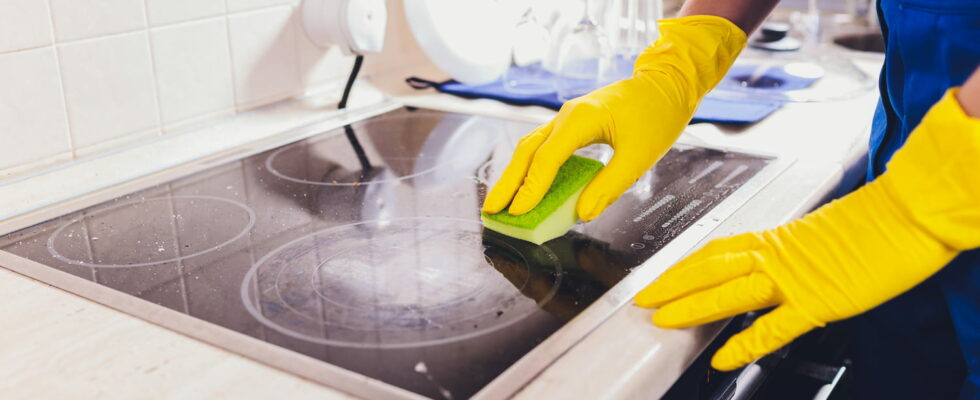With this trick, you will no longer have trouble making the white traces disappear on your cooking plates.
The cooking plates, whether in vitroceramic or induction can quickly become a puzzle when it comes to cleaning them. The famous white traces left after cooking sometimes seem impossible to make disappear, especially if you do not eliminate them immediately.
These stubborn traces often come from limestone residues and water or liquid splashes that have dried on the surface. By drying, the minerals present in water, such as limestone, leave visible deposits. Sometimes they are also leftover fats or residues of cleaning products which, poorly rinsed, leave these marks unsightly. Glass or ceramic plates, in particular, tend to more easily reveal these traces because of their brilliant finish.
Fortunately, it is not necessary to invest in expensive and specialized cleaners to get rid of it. The best way to avoid white traces on the cooking plates is of course prevention. When you cook, adopt the reflex to monitor the cooking of your dishes to avoid any overflow, and clean your plate after each use. But if despite all your efforts of white traces appear, there is a simple solution, a daily product that you surely already have in your home. And only a few drops are enough to find an impeccable plate!

Your ally against these rebel traces? Simply white vinegar. It is recognized for its descaling and degreasing properties. Thanks to its acidity, it dissolves limestone deposits and eliminates fat residues in the blink of an eye, without damaging the surface of your plates.
Here’s how to use it to clean your cooking plates effortlessly. Dilute white vinegar in a little hot water (about a part of vinegar for two parts of water). If your plates are particularly dirty, you can use it pure. Soak a soft cloth or a non-abrasive sponge with the mixture and pass it over the white traces. For the most encrusted areas, leave to act for a few minutes.
Then rub gently by performing circular movements to avoid scratching the surface. Wipe with a slightly damp clean cloth, then dry with a microfiber cloth for an impeccable finish and without traces.
This tip really works if you combine white vinegar with hot water, or if you heat the white vinegar on the plates. The heat will help to disinclude limestone and dirt.
Be careful to use the non -abrasive side of your sponge, and to avoid aggressive products or unsuitable tools to rub your plates to avoid scratching and marking the surface.
